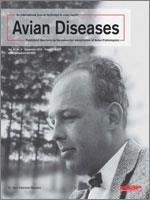Many developing countries lack sufficient resources to conduct animal disease surveillance. In recent years, participatory epidemiology has been used to increase the cover and decrease the costs of surveillance. However, few diagnostic performance assessments have been carried out on participatory methods. The objective of the present study was to estimate the diagnostic performance of practitioners working for the Community-Based Animal Health and Outreach (CAHO) program, which is a participatory disease surveillance system for the detection of highly pathogenic avian influenza outbreaks in Egypt. CAHO practitioners' diagnostic assessment of inspected birds was compared with real-time reverse-transcriptase polymerase chain reaction (RRT-PCR) test results at the household level. Diagnostic performance was estimated directly from two-by-two tables using RRT-PCR as a reference test in two different scenarios. In the first scenario, only results from chickens were considered. In the second scenario, results for all poultry species were analyzed. Poultry flocks in 916 households located in 717 villages were inspected by CAHO practitioners, who collected 3458 bird samples. In the first scenario, CAHO practitioners presented sensitivity (Se) and specificity (Sp) estimates of 40% (95% confidence interval [CI]: 21%–59%) and 92% (95% CI: 91%–94%), respectively. In the second scenario, diagnostic performance estimates were Se = 47% (95% CI: 29%–65%) and Sp = 88% (95% CI: 86%–90%). A significant difference was observed only between Sp estimates (P < 0.01). Practitioners' diagnostics and RRT-PCR results were in very poor agreement with kappa values of 0.16 and 0.14 for scenarios 1 and 2, respectively. However, the use of a broad case definition, the possible presence of immunity against the virus in replacement birds, and the low prevalence observed during the survey would negatively affect the practitioners' performance.
How to translate text using browser tools
19 September 2016
Sensitivity and Specificity Estimation for the Clinical Diagnosis of Highly Pathogenic Avian Influenza in the Egyptian Participatory Disease Surveillance Program
C. Verdugo,
I. El Masry,
Y. Makonnen,
H. Hannah,
F. Unger,
M. Soliman,
S. Galal,
J. Lubroth,
D. Grace
ACCESS THE FULL ARTICLE

Avian Diseases
Vol. 60 • No. 4
December 2016
Vol. 60 • No. 4
December 2016
avian influenza
Diagnostic performance
Egypt
participatory epidemiology
surveillance




